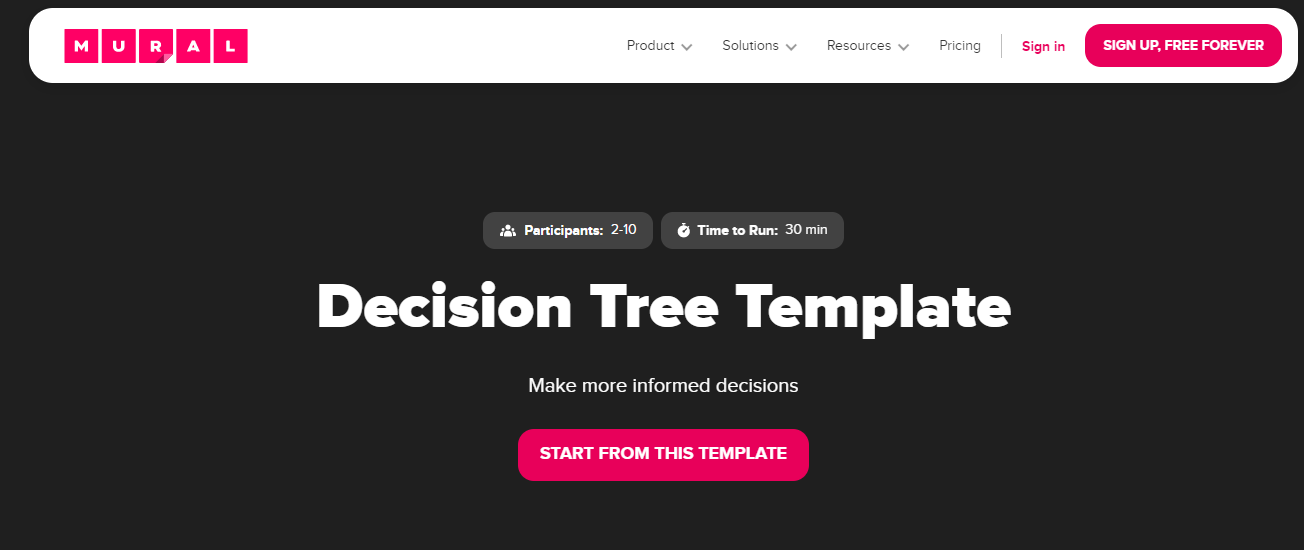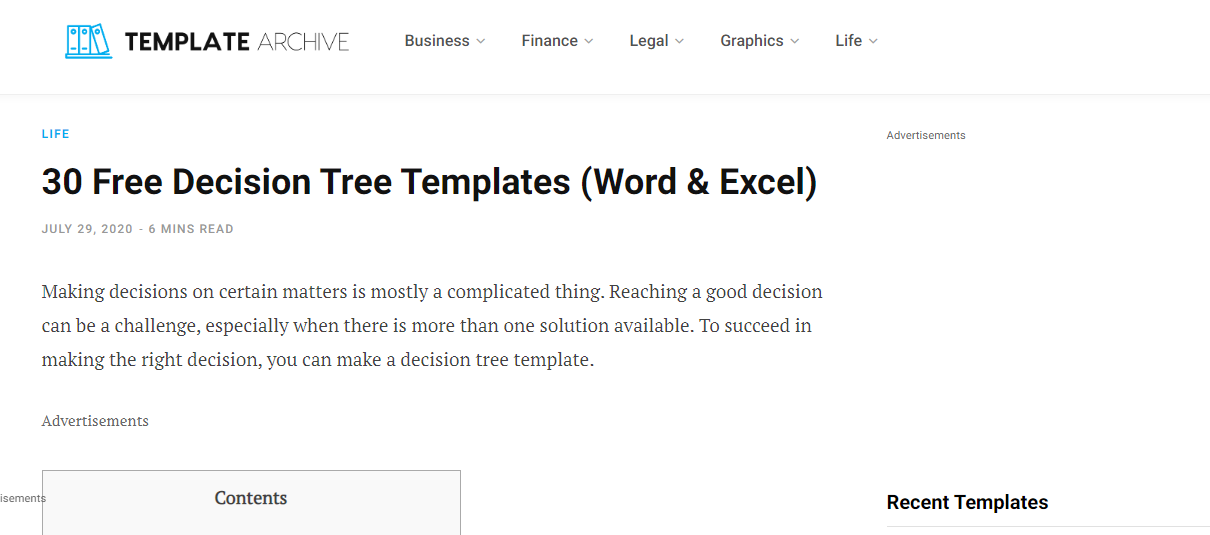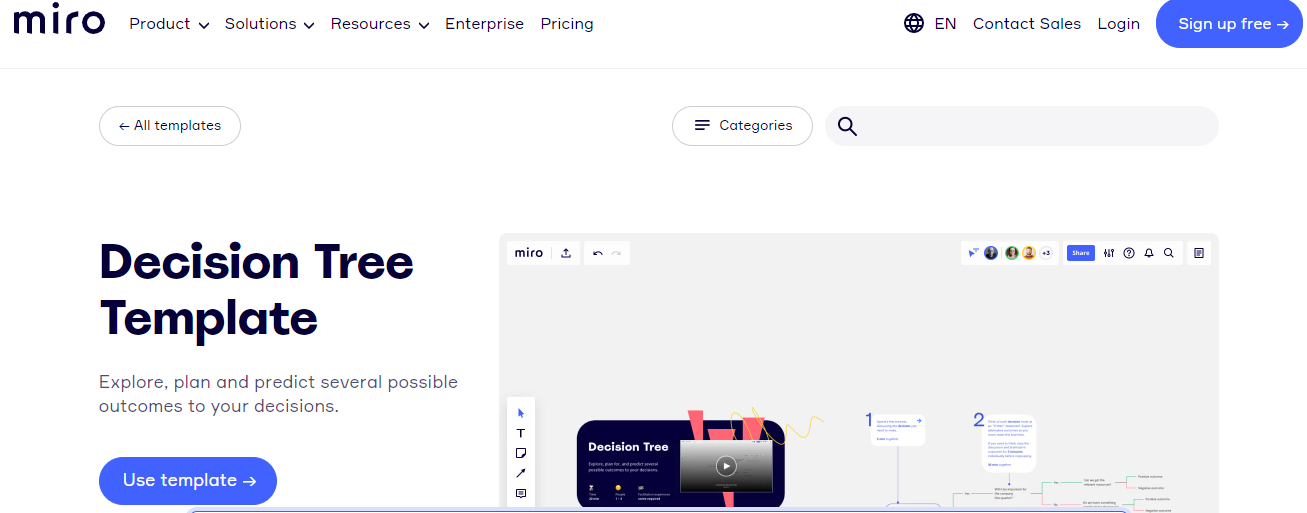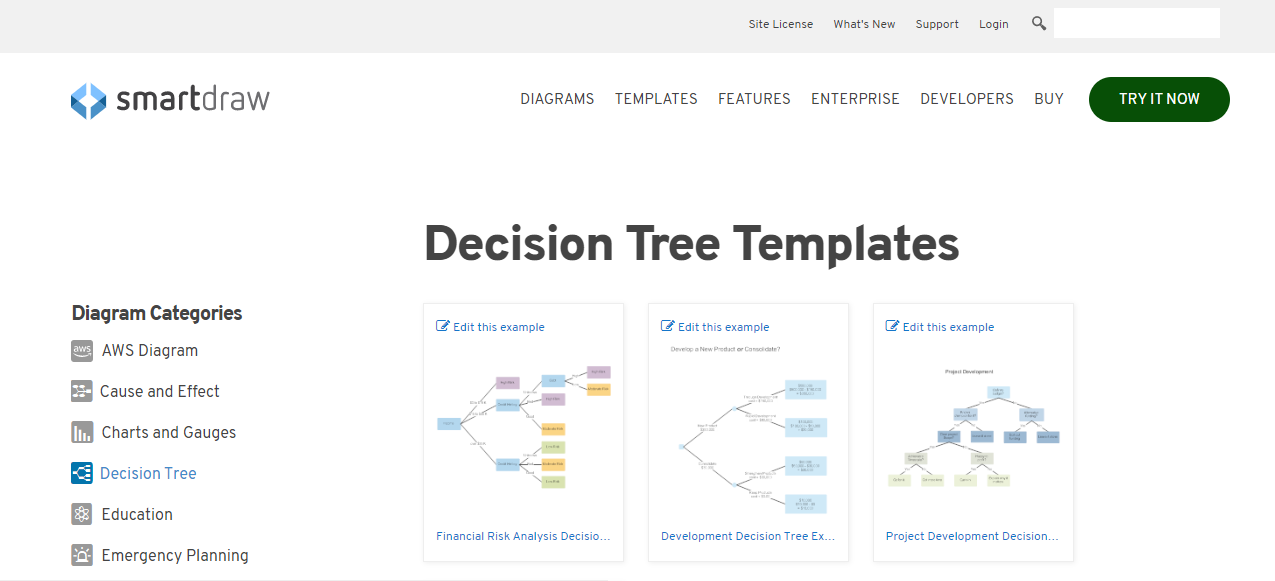What Is Decision Tree Complete Guide & Free Templates (2022)

Making decisions may be a difficult task, but using free decision tree templates can help. Decision-making in any company or organisation entails taking into account a number of relevant elements before selecting the best alternative. Using decision tree templates helps streamline the process and assists companies in making difficult decisions.
This article will provide you with a comprehensive overview of the decision tree, including its significance, components, application cases, and decision tree-making method. We will also provide you with some free decision tree templates.
What Exactly Is a Discussion Tree?
A decision tree is a form of flowchart that may be used to examine all potential options and their implications. Every branch of a decision tree represents a possible option. The decision tree has the advantage of allowing you to scale it up or down based on cause and effect. When a result leads to another course of action, all you have to do is extend a branch.
The Value of a Decision Tree
Anyone involved in any form of professional decision-making is aware that it is a difficult process. To make a decision, you must have a thorough understanding of the facts as well as intuition.
To define all possible outcomes, people frequently use tools such as a decision tree template. It also assists you in visualising the processes required to make the right decision.
Decision-making is a type of problem-solving that necessitates the use of reasoning and probability. Users may easily arrange all accessible data by using a decision tree template. They can also fill in the blanks by combining probability and facts to arrive at the best decision.
Because small organisations have few resources and it is difficult to obtain financial buy-in, decision trees will be especially beneficial to startups and SMBs. Large firms and enterprises, on the other hand, can use decision trees to determine the best solutions before presenting them to stakeholders or an internal team.
You may use decision trees to determine whether a new product is feasible or whether it can attract funding. All you need to do is use your imagination to weigh the numerous choices.
Common Elements of a Good Decision Tree
Although decision trees help you deal with complex data, these flowcharts are simple to understand. The key components included in all decision trees are as follows:
- Every decision tree begins with a fundamental subject or question. It is known as the decision tree’s root. It is the source of all other nodes and branches.
- This node represents multiple decisions and results. A decision node (square form) represents a decision, a chance node (circle shape) indicates probability, and an end node (triangle shape) represents the conclusion or outcome.
- A branch is a node that connects two other nodes.
Here are some more terms that are frequently used in a decision tree:
- An internal node is any node between the root and leaf nodes (decisions and chance nodes); there can be any number of internal nodes.
- When the decision trees get complicated, you use pruning to remove nodes holding useless data.
- Splitting or branching occurs when a node is separated into two or more sub-nodes. These sub-nodes might be either internal or external.
Step-by-Step Instructions for Making a Decision Tree
These are the procedures you should follow if you are preparing to develop a decision tree.
1. Have a Central Question: To begin creating a decision tree, enter your main question into the decision tree template.
2. Form Branches Around the Question: Consider some possible outcomes. Draw a line with a node at the beginning and a leaf node at the end for each of these.
3. Include Leaves: Add an if/then statement to each leaf node. As a result, you may point out the consequences of each option.
4. Add New Branches If Necessary: Continue to expand the tree by adding more branches and leaves with correct labelling.
5. Evaluate and Decide: After answering all of the decision tree’s questions, you may make your decision.
6. Consult with stakeholders: If you made a decision on your own using our decision tree template, communicate the outcome with the other parties involved before proceeding with your decision.
Real-World Decision Tree Use Cases
A decision tree is a strong tool that is often used by data analysts who develop company operations plans. It is also used to train algorithms in machine learning and artificial intelligence.
Decision trees may be seen in the following industries:
- A technological firm is seeking to assess business expansion potential.
- Banks and financial institutions that need to forecast payment defaults based on historical data.
- A hospital that must prioritise patient treatment based on critical characteristics such as age and symptoms.
- A logistics organisation must make a strategic management decision.
Now that we’ve established the advantages of decision trees, let’s have a look at some of the greatest websites for obtaining decision tree templates.
1. Mural
Mural is a visual collaboration site where you can get a free team decision tree template. After accessing the template, select “Make Mural from Template” and it will be ready to customise.
It contains tooltips on the template’s left panel to assist you with navigation. You can easily move any node or branch to customise it. You may save the finished tree as a PDF, PNG, or ZIP file.
It also enables changing the branch type, node colour, zooming, locking and unlocking, tip change, direction change, labelling, tagging, adding a link, text formatting, border, and stroke width. You may manually draw a decision tree by switching to sketch mode.
2. TemplateArchive
TemplateArchive also has a collection of 25+ decision tree templates available for download and editing in simple stages. The templates on this website include numerous formatting and tree styles, so you may pick one that matches your brand’s look.
Some of the templates are designed to handle easy problems in a few simple steps, while others might assist you in finding answers to complicated concerns. Open them in MS Word and make the necessary changes to obtain your decision.
3. Miro
Miro is a team communication application that provides a choice of business templates. You may get its decision tree template for free by adding it to your application’s team board. It also includes a video tutorial to show you how to use the template.
This template has several customization possibilities, including node colour, text size, font colour, lock, grouping, and filtering items. You can add or remove any node based on your needs. Miro also allows you to save the template as a PDF, JPG, or spreadsheet (CSV) to Google Drive.
4. Canva
Many Canva users are unaware that they can use free decision tree templates for decision visualisation. It includes a number of professionally created templates to help you with your strategic difficulties.
Non-designers may edit the template using the platform’s various drag-and-drop capabilities. This tool allows you to simply alter the font size, font style, alignment, and text format. To make the template more appealing, users can add animation and effects.
Canva also allows you to share or download your decision trees in high quality. You may also easily include the decision tree in presentations and reports.
5. SmartDraw
If you want customisable templates for your decision-making, SmartDraw is an excellent choice. In this section, you can find decision tree templates for financial risk analysis, development, company mergers, and project development.
It allows you to swiftly add nodes in multiple directions from a node with a single click. A node can also have notes, hyperlinks, or comments added to it. You may change the shapes, style, and formatting of the decision tree using the left panel. The decision tree may be exported in CSV format and imported from CSV, XLS, and XLSX files.
6. EdrawMax
EdrawMax provides curated decision tree templates such as App Development, Python, Asset, Statistical Test, Data Mining, and Operation Airbridge. Select a template and then click Duplicate to open it for modification.
You may add and alter the shapes in the decision tree from the left panel. The line, fill, and shadow may all be customised using the appropriate panel settings. Furthermore, you may customise the template with a variety of other choices provided by this platform. You may export the decision tree to PDF, DOCX, XLSX, PPTX, HTML, SVG, and graphics formats using EdrawMax.
Final Thoughts
A decision tree may provide you with much-needed inspiration if you are stuck between two business possibilities or seeking a guideline to handle any issue. A decision tree is a useful method for arriving at the best decision, regardless of the size of the firm or the severity of the situation.
You may obtain a decision tree template that is appropriate for your needs by visiting the websites indicated above. Before making a final decision, you may use free SWOT analysis templates to identify your strengths and weaknesses.











